 Indeed, I strongly believe that statement. Think about it: what would Tarzan’s life be like without the challenges of the beautiful but deadly jungle? Or the scientists and staff in John Carpenter’s The Thing without the starkness of Antarctica’s ice and snow? Or Lawrence of Arabia without the vastness of the blistering desert? Settings such as these play key roles in so many stories.
Indeed, I strongly believe that statement. Think about it: what would Tarzan’s life be like without the challenges of the beautiful but deadly jungle? Or the scientists and staff in John Carpenter’s The Thing without the starkness of Antarctica’s ice and snow? Or Lawrence of Arabia without the vastness of the blistering desert? Settings such as these play key roles in so many stories.
Speaking of the desert, Southern California’s Anza-Borrego Desert plays a major part in my ghost story, Fire Dance. From the colorful opening of the book to a raging sandstorm near the end, the desert is almost always in the forefront.
I’ve chosen a couple of scenes from the book to illustrate my point. Chapter One: Concordia takes place in the nineteenth century and sets the stage for the contemporary story. These are the opening paragraphs.
Outside the adobe walls of the sanitarium the eerie, primordial beauty of the southern California desert went ignored by the wandering inmates.
No matter that it was April, the time when desert wildflowers blossomed, painting a landscape that contradicted the majority of opinions regarding the bleak, arid world of sand and scrub. The inmates of Concordia Sanitarium, in their white, shroud-like gowns, did not see the patches of magenta monkey flowers, the yellow blooms of the creosote bush or the burroweed. The fiery red tips of the ocotillo cactus remained invisible to them, and so too the purple-blue buds of the indigo bush.
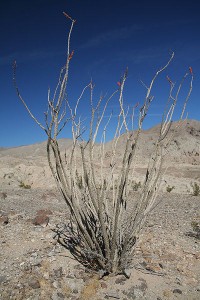
Anza-Borrego: rather bleak…
Jacob Owen liked this time of year, and he took a moment to observe its subtleties, as a connoisseur would study a fine work of art. Once, he would have felt no differently than the rest of the inmates.
Once, he had been like them.
If not for Dr. Everett Cooke he might still be walking in their shrouds.
Good Dr. Cooke.
Twelve years ago: the spring of 1866, when Jacob had been admitted to the Connecticut State Hospital for what the doctors called dementia praecox. He had been twenty-six years old then. An incurable case, they said. He’ll stay here, safe, and won’t be a burden to anyone for the rest of his natural life.
The odds had been against him, Jacob now knew. Earlier in the nineteenth century, mental institutions had been torchbearers in reforms for treatment of the insane. But by 1866—and even now, in 1878—they had deteriorated into little more than custodial facilities for hiding an undesirable social problem.
But Dr. Everett Cooke could hardly be called a conventional practitioner. Indeed, he would have been quite at home during the ill-fated reform movement. In addition to his many duties at the hospital, he made Jacob his personal project. Within a year Cooke’s peers were forced to acknowledge the fact that the funereal-looking Jacob had been restored to a “far more agreeable mental condition.”
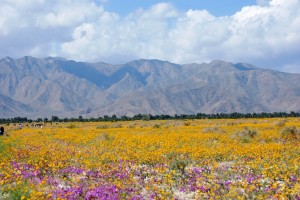
…but it is also a place of beauty.
Ever since then, Jacob had served Dr. Cooke faithfully. He would have followed him anywhere, as he’d done to California ten years ago.
Dr. Cooke’s first four years in California had been at the prestigious Livermore Sanitarium, up north. He had done fine things there, and had won the respect of his colleagues.
So in 1872, when his dream of becoming the medical supervisor of his own facility turned into reality, the Livermore administration provided him with excellent references. Concordia Sanitarium filled up quickly.
Lots of folks criticized its location, Jacob recalled. Such an odd place: the bleak desert across the mountains from the harbor town of San Diego. Miles off the stagecoach route between Los Angeles and Yuma, the same route that the Spanish explorer, Juan Bautista de Anza, had followed over a century ago when he opened the trail to California. But after the first couple of years, even the harshest critics had to admit that it seemed to be going well.
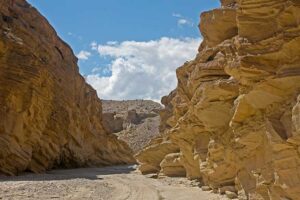
A 4-wheel drive trail in Anza-Borrego.
In Chapter Nine: Desert Trails, my main characters, Mark Alderson and Tracy Russell, are in the early stages of getting to know each other. Mark, a kind of “Richard Kimble” character (on the run), is the bartender at the country club in Smoke Tree, a small town of mostly retired seniors near the ruins of Concordia Sanitarium. Tracy had come to Smoke Tree to be with her dying mother who, just before she passed on, appeared to be possessed by…someone or something. Mark has invited Tracy for a desert bike ride.
(Mark) and Tracy circumvented the reflective barrier at the end of Cahuilla Lane and immediately found themselves upon a narrow, firmly packed deer trail that twisted in and out amid the brittle-bush, creosote, and clumps of different cholla cactus, but mostly took them farther east. Mark, who knew every inch of the trail, pedaled swiftly. Tracy stayed with him, seldom more than two yards behind.
Soon the path veered south-southeast and continued that way. Towering ocotillo dominated, as well as thick barrel cacti, bare-branched chuparosa and foul-smelling cheesebush. Tracy’s eyes darted between the flora and the path ahead, which had narrowed even more.
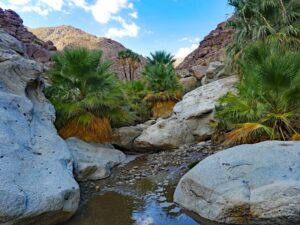
Palm Canyon.
They emerged from the foliage about twenty yards from the shoulder of the Seaway. Pedaling with reckless abandon, Mark angled across the asphalt and rode the other shoulder in the direction of the rising sun.
Another half-mile east a nameless, graded dirt road turned off S22 to the south. Barely wide enough for one car, it allowed plenty of room for Tracy and Mark to pedal side by side.
“Well, how do you like it so far, eating dust and all?” Mark asked.
“It’s great, but you’re crazy, you know!”
“Thank you, I try. Don’t worry, after the initial burst of energy I usually slow down. We turn here.”
“That was qui—” she began, but he had already taken off on another trail, one so narrow she hadn’t even noticed it. For another five minutes they weaved through more of the same flora, plus burroweed, indigo bush and tall agave. Once, a terrified jackrabbit bounded high to get out of their way.
When Mark finally braked to a stop, Tracy nearly rode up his back. They were at the edge of a broad indentation in the desert floor…shallow, but wide.
“This is Indianhead Wash,” he told her, “and yonder lies the answer to your question.”
Tracy had removed her dusty wrap-around sunglasses but still brushed sand off her face. “What question?”
“That is a smoke tree.”
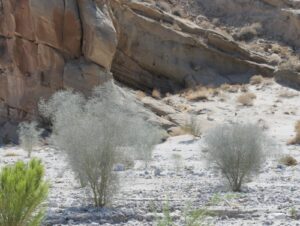
Desert smoke trees.
The spiny tree, growing in the middle of the wash, stood between fifteen and twenty feet high. Its color, an odd gray-green, lent it a ghostly, ethereal quality. From where Tracy stood, it looked like a broad puff of smoke.
“That’s really weird,” she said, impressed.
“See those little purple buds? Unlike many desert plants, this one blooms in the summer. When…if we come back next week, they’ll be even brighter.”
Past the first tree stood others, all within the depression, though not in the middle. “And they only grow in the wash?” Tracy asked.
“Sometimes along the edge, but mostly in.”
“You like the desert, don’t you?”
“It’s okay.” He shrugged. “Since it’s where I am now, I make the most of it.”
I’ve gone hiking in Anza-Borrego many times, and as you can see from these descriptions, if you meet the desert on its own terms, it’s a great place to be. Unfortunately for Tracy and Mark, it will not be kind for them at a critical point of the story. Yes, it is definitely a character.
A ghost story, a horror novel, a love story: Fire Dance has it all. Publishers Weekly gave it a positive review, in part: “Sirota returns…with this atmospheric tale of horror in the American Southwest.” Among many positive reviews, I greatly appreciated this one: “Sirota has created a blended genre ghost story-walk-in tale that has shiver producing moments side-by-side with moments of extreme empathy. Is there pure evil in the world? Is that evil strong enough to reanimate? What happens when innocent souls are trapped in place and cannot rest eternally? Sirota is a masterful story teller and Fire Dance confirms his spot in the horror/gothic realm of Dean Koontz and Edgar Allan Poe.”
Fire Dance is available in eBook and paperback on Amazon. Enjoy!
